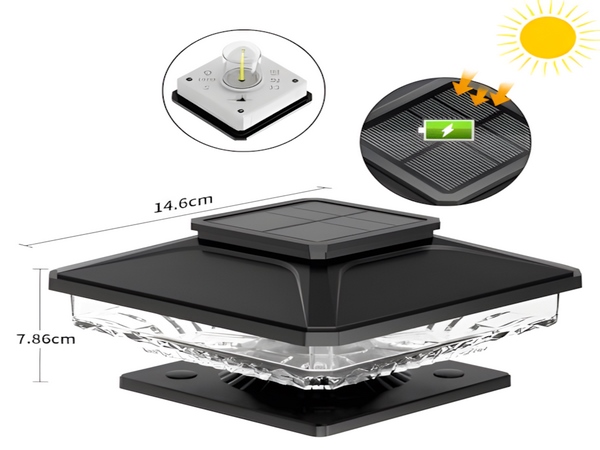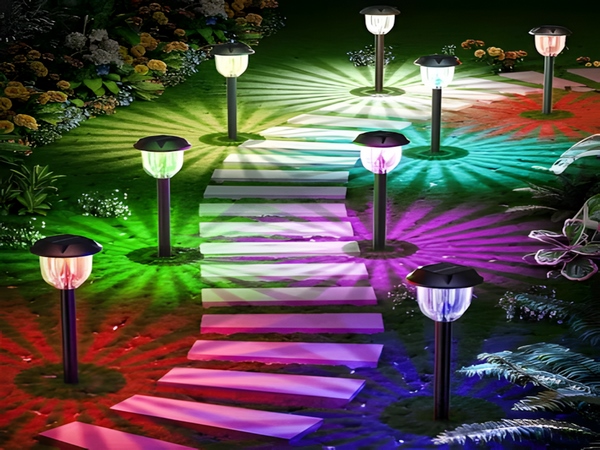
Solar garden lights are widely used in communities, parks, office buildings, and various other locations due to their aesthetically pleasing design and environmentally friendly, energy-saving solar power. With their novel and fashionable shapes, they not only provide lighting but also enhance the environment. They do not consume conventional electricity, and there is no need for trenching and wiring, which makes them widely accepted and adopted by people. So, what are the components of solar garden lights? Below, we will introduce them.
1. Solar panels are divided into monocrystalline and polycrystalline panels. Monocrystalline panels are made from high-purity monocrystalline silicon rods, representing one of the fastest-developing types of solar cells. Polycrystalline solar panels are made up of high-efficiency polycrystalline solar cells arranged in different series and configurations to form solar modules.
2. The battery is an electrochemical device that stores chemical energy and releases electrical energy when necessary. Its basic principle is based on electrochemical reactions; during charging, electrical energy is converted to chemical energy for storage, and during discharging, chemical energy is converted back to electricity for supply to external systems. Batteries should be stored in environments with temperatures between 0-36 degrees Celsius, with a typical storage period of 3-6 months. Batteries stored beyond 3 months should be recharged. The installation area for batteries should be away from heat sources and places that can produce sparks, maintaining a safety distance greater than 0.5 meters. Direct sunlight exposure should be avoided, and they should not be placed in environments with radioactive or corrosive gases, and cannot be stored in closed containers.

Battery burial boxes are products developed alongside the advancement and application of solar garden lights, primarily used for housing batteries. They have the following features:
1. The burial box is sealed for underground use, effectively solving waterproof issues.
2. The burial box extends to the bottom of the lamp post through conduit, addressing ventilation issues.
3. The unique fence-style reinforcement design of the burial box effectively addresses the heat dissipation and insulation issues of the batteries in an enclosed environment.
4. Made from high-quality materials through one-time injection molding, the burial box is shock-resistant, corrosion-resistant, and suitable for acidic and alkaline conditions, providing high pressure-bearing strength.
5. The burial box, being underground and connected to the base of the lamp, effectively serves as a theft deterrent.
3. Solar Controller: The role of the solar controller is to manage the operational state of the entire system and protect the battery from overcharging and over-discharging. In areas with significant temperature differences, a qualified controller should also feature temperature compensation. Additional functions such as light control switches and time control switches should be optional features of the controller.
4. Inverter: In many cases, there is a need to provide AC power at 220VAC or 110VAC. However, the direct output from solar energy is typically 12VDC, 24VDC, or 48VDC. To supply electrical power for 220VAC appliances, the direct current generated by a solar power system must be converted into alternating current using a DC-AC inverter. In certain situations where various voltage loads are required, a DC-DC inverter is also needed, such as converting 24VDC to 5VDC.

The above information regarding the components of solar garden lights concludes our sharing. As electricity costs rise, societal awareness of energy conservation and environmental protection increases, and government policies support the energy-saving industry, solar garden lights are undoubtedly set to replace traditional lighting fixtures and become the mainstream of the market, with a bright future ahead.



